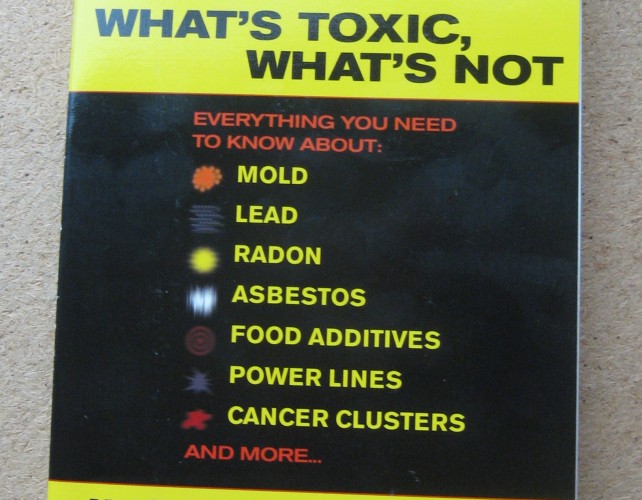
The title of this book What’s Toxic, What’s Not – intrigued me, so I ordered it. While all topics covered in the book don’t directly relate to healthier indoor air quality, there’s a lot in here that makes it worth reading from cover to cover.
Throughout the book the authors present myths related to toxins, and then counterbalance them with the reality. For example:
MYTH: Mold is a sign of uncleanliness and poor housekeeping.
REALITY: Mold will grow wherever it can find moisture.
When homes are damp or there are leaks in plumbing systems, this can support mold growth and can lead to respiratory symptoms, especially in asthmatics. Many don’t realize that mold allergies can develop over time, so address mold problems as soon as possible.
These are the authors’ Top 5 Toxic Risks which can affect indoor air quality:
- Radon
- Lead Paint
- Carbon Monoxide
- Arsenic At Home
- Volatile Chemicals
Here are a couple examples related to volatile organic compounds (VOC) where it would be advisable to follow the recommended precautions.
VOC Example 1: When we bring clothes home from the dry cleaners, not only have our clothes absorbed a dry-cleaning solvent PERC, but we can inhale this toxic chemical unless we take our cleaned clothes out of the bag and air them outdoors, maybe on a porch, for a couple days.
VOC Example 2: When we use heavy-duty cleaning products to remove carpet stains, we are exposing ourselves to PERC, TCE, and even petroleum distillates. These solvents are volatile, get into the air, and can effect our nervous system causing dizziness, headaches, or drowsiness. Only use these solvents in well-ventilated areas.
In this book, the authors help us determine how something that is toxic may affect us. First we evaluate our exposure level or how much we are around the toxin. Then we assess just how concentrated or toxic it is. Finally we can determine what is the level of risk that we face from being exposed based on our how much we are exposed to it and how toxic is it. This resonates with my risk management background. Keep safe when using chemicals, especially indoors, in order to live with healthier indoor air quality.


